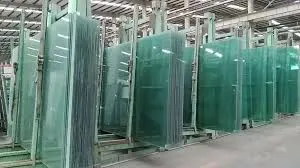The Significance of Glass in Building Design
In contemporary architecture, glass has emerged as a pivotal material, significantly influencing building design. Its unique properties, such as transparency, versatility, and aesthetic appeal, make it an indispensable element in modern structures. This article explores the multifaceted role of glass in architecture, highlighting its benefits, challenges, and future potential.
The Significance of Glass in Building Design
Moreover, the aesthetic possibilities that glass offers are virtually limitless. Architects can play with various types of glass, such as frosted, tinted, or reflective options, to achieve different visual effects. Innovative designs often incorporate intricate glasswork, from minimalist installations to elaborate stained glass, adding character and beauty to buildings. This versatility enables architects to express their creativity while ensuring that the design aligns with the building's intended purpose and context.
building design glass
However, the use of glass in building design does present several challenges. One of the primary concerns is energy efficiency during extreme temperatures. While glass can facilitate passive solar heating, it can also lead to overheating in the summer or excessive heat loss in winter. To address this, architects are increasingly turning to advanced glazing technologies, such as low-emissivity (Low-E) glass and dynamic glazing systems, which can adapt to environmental conditions. These innovations not only enhance thermal performance but also contribute to sustainability by reducing reliance on HVAC systems.
In addition to energy efficiency, safety is another crucial consideration for glass in building design. The incorporation of safety glass, treated to resist shattering and breakage, is imperative in high-rise buildings and areas with significant foot traffic. Furthermore, designers must consider the structural implications of using large glass panels, ensuring that they meet the required building codes and standards.
Looking to the future, the role of glass in building design is poised for further evolution. With the advent of smart glass technology, which can change opacity in response to light conditions or privacy needs, the possibilities are expanding. This innovation not only enhances the functional aspect of glass but also aligns with the growing trend toward smart buildings that leverage technology for improved sustainability and occupant experience.
In conclusion, glass is a fundamental component of modern building design, offering a blend of aesthetic beauty, functionality, and opportunities for innovation. As architects continue to push the boundaries of design, the role of glass will undoubtedly evolve, paving the way for buildings that are not only visually stunning but also environmentally responsible and responsive to the needs of their occupants. Embracing this material allows architects to create spaces that inspire and connect, reinforcing the pivotal role of glass in the architecture of the future.
 Afrikaans
Afrikaans  Albanian
Albanian  Amharic
Amharic  Arabic
Arabic  Armenian
Armenian  Azerbaijani
Azerbaijani  Basque
Basque  Belarusian
Belarusian  Bengali
Bengali  Bosnian
Bosnian  Bulgarian
Bulgarian  Catalan
Catalan  Cebuano
Cebuano  Corsican
Corsican  Croatian
Croatian  Czech
Czech  Danish
Danish  Dutch
Dutch  English
English  Esperanto
Esperanto  Estonian
Estonian  Finnish
Finnish  French
French  Frisian
Frisian  Galician
Galician  Georgian
Georgian  German
German  Greek
Greek  Gujarati
Gujarati  Haitian Creole
Haitian Creole  hausa
hausa  hawaiian
hawaiian  Hebrew
Hebrew  Hindi
Hindi  Miao
Miao  Hungarian
Hungarian  Icelandic
Icelandic  igbo
igbo  Indonesian
Indonesian  irish
irish  Italian
Italian  Japanese
Japanese  Javanese
Javanese  Kannada
Kannada  kazakh
kazakh  Khmer
Khmer  Rwandese
Rwandese  Korean
Korean  Kurdish
Kurdish  Kyrgyz
Kyrgyz  Lao
Lao  Latin
Latin  Latvian
Latvian  Lithuanian
Lithuanian  Luxembourgish
Luxembourgish  Macedonian
Macedonian  Malgashi
Malgashi  Malay
Malay  Malayalam
Malayalam  Maltese
Maltese  Maori
Maori  Marathi
Marathi  Mongolian
Mongolian  Myanmar
Myanmar  Nepali
Nepali  Norwegian
Norwegian  Norwegian
Norwegian  Occitan
Occitan  Pashto
Pashto  Persian
Persian  Polish
Polish  Portuguese
Portuguese  Punjabi
Punjabi  Romanian
Romanian  Russian
Russian  Samoan
Samoan  Scottish Gaelic
Scottish Gaelic  Serbian
Serbian  Sesotho
Sesotho  Shona
Shona  Sindhi
Sindhi  Sinhala
Sinhala  Slovak
Slovak  Slovenian
Slovenian  Somali
Somali  Spanish
Spanish  Sundanese
Sundanese  Swahili
Swahili  Swedish
Swedish  Tagalog
Tagalog  Tajik
Tajik  Tamil
Tamil  Tatar
Tatar  Telugu
Telugu  Thai
Thai  Turkish
Turkish  Turkmen
Turkmen  Ukrainian
Ukrainian  Urdu
Urdu  Uighur
Uighur  Uzbek
Uzbek  Vietnamese
Vietnamese  Welsh
Welsh  Bantu
Bantu  Yiddish
Yiddish  Yoruba
Yoruba  Zulu
Zulu 

